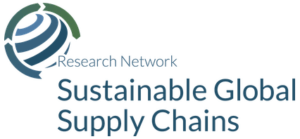Institutional design of voluntary sustainability standards systems: Evidence from a new database
Matteo Fiorini, Bernard Hoekman, Marion Jansen, Philip Schleifer, Olga Solleder, Regina Taimasova, Joseph Wozniak
2019
DOI numberhttp://dx.doi.org/10.1111/dpr.12379
#Trade and FDI
#Sustainability standards
Voluntary sustainability standards (VSS) have become a significant element of the governance of international trade and production. Even though VSS are not mandatory (required by law), in practice they are often necessary for producers to participate in global value chains. Finally, VSS are often considered costly for producers. This article provides an overview of the global VSS landscape, and addresses the following questions: how producer‐friendly are VSS, and how do their practices towards producers vary with relevant features of VSS institutional design? The analysis is empirical, and it is based on a data collection project called Standards Map (SM), launched in 2011 by the International Trade Centre (ITC). The analysis covers a population of up to 180 VSS. This large‐n approach allows for a macro‐perspective which complements the existing literature characterized by micro‐level studies. Our analysis documents a significant heterogeneity in producer‐friendly practices across VSS. We find that participation in meta‐governance organizations (such as ISEAL full membership) is strongly associated with producer‐friendly practices. Moreover, the location of headquarters in Organisation for Economic Co‐operation and Development (OECD) member countries, the engagement of buyers in the board or management of the scheme and the influence of producers in decision‐making are also positively associated with our measures of producer friendliness, although these relationships are found to be less robust. The dimension of VSS we have focused on is just one element of the information contained in the SM database. Other relevant dimensions of standards systems, such as the structure of requirements, their product scope—and other aspects of institutional design, such as verification procedures, stakeholder engagement, harmonization or convergence vs. competition between different schemes—can all be analysed using the database. We hope the descriptive analysis undertaken in this article will help the research community to make better use of this source of information.

